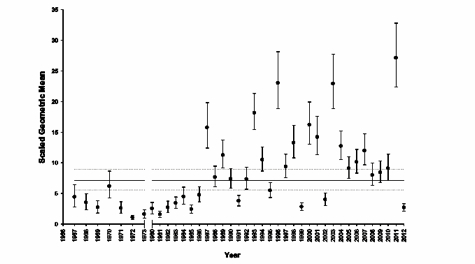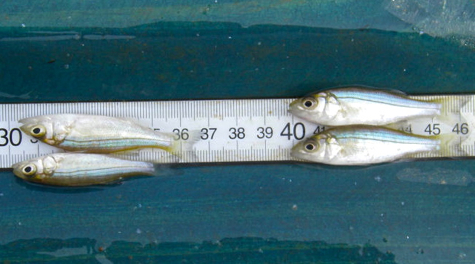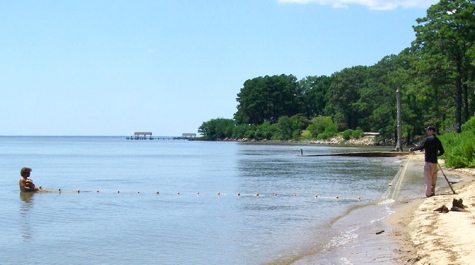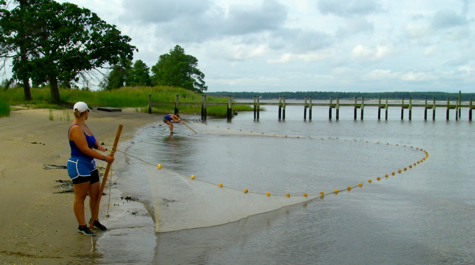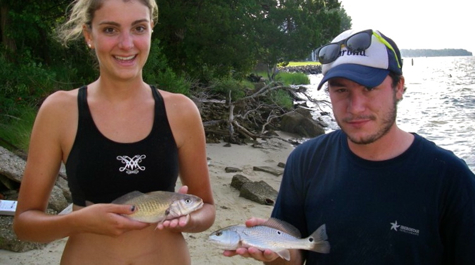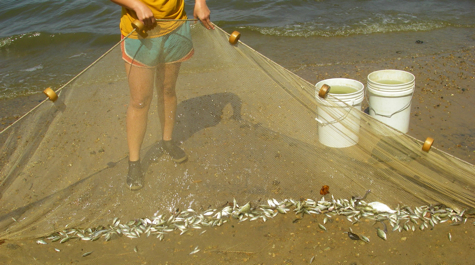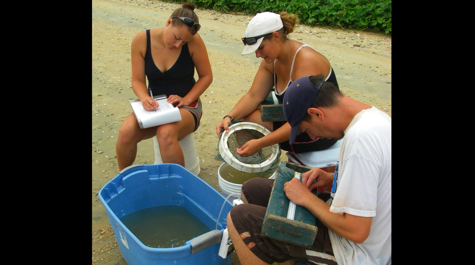2011 a banner year for young striped bass in Virginia
Preliminary results from a 2011 survey conducted by researchers at the Virginia Institute of Marine Science (VIMS) suggest the production of a strong class of young-of-year striped bass in the Virginia portion of Chesapeake Bay. The 2011 year class represents the group of fish hatched this spring.
The results are good news for the recreational and commercial anglers who pursue this popular game fish because this year class is expected to grow to fishable size in 3 to 4 years. The results are also good news for Chesapeake Bay, where striped bass play an important ecological role as top predators.
The 2011 study, formally known as the Juvenile Striped Bass Seine Survey, recorded more than 27 fish per seine haul, significantly higher than the historic average of 7.5 fish per seine haul. This is a significant increase from recent years, during which catches of young fish were average.
Although survey results show that numbers of young-of-year striped bass in Virginia have been average to above-average since 2003, results from a similar survey in Maryland indicate that numbers of juvenile striped bass there were below average in 2008, 2009, and 2010. Striped bass populations and the fisheries they support depend on the availability of strong year classes to mitigate the effect of less productive years.
Professor Mary Fabrizio, who directs the Juvenile Striped Bass Seine Survey at VIMS, notes that the economic and ecological value of striped bass lends significant interest to the year-to-year status of their population. "By estimating the relative number of young-of-year striped bass," she says, "our survey provides an important measure of annual and long-term trends in the Bay's striped bass population."
The VIMS Juvenile Striped Bass Seine Survey, managed by Leonard Machut, currently samples 18 stations in the Rappahannock, York, and James River watersheds. Each year, biologists sample each site 5 times from early July through mid-September, deploying a 30.5 m-long (100-foot) seine net from the shore. They count each netted fish, measure its fork length (the distance from snout to the fork in the tail), and return it to the water. These young striped bass generally measure between 40 and 100 mm (1.5-4 inches). Survey scientists measured nearly 4,200 juvenile striped bass at these stations in 2011. VIMS has been conducting the survey annually since 1967 for the Virginia Marine Resources Commission (VMRC).
The Bay's striped bass population has rebounded from historic lows in the late 1970s and early 1980s, following fishing bans enacted by Delaware, Maryland, and Virginia in the mid- to late-1980s. Since then, the Bay's striped bass population has increased to the point that striped bass are now considered recovered.
For more information about the Virginia Juvenile Striped Bass survey visit the survey's webpage at http://www.vims.edu/research/departments/fisheries/programs/juvenile_striped_bass/index.php

